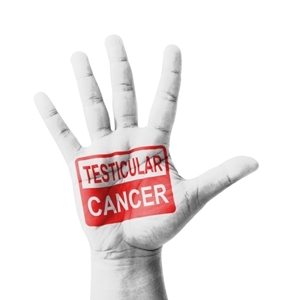News for professionals on healthcare assignments: Testicular cancer rates among young Hispanic American males have jumped drastically in the last two decades, according to a study published online in the American Cancer Society's journal Cancer.
Between 1992 and 2010, the annual incidence of testicular germ cell tumors in 15- to 39-year-old Hispanic men rose 58 percent, from 7.18 cases per 100,000 to 11.34 cases per 100,000. An increasingly high amount of men reported different subtypes of testicular cancer and for all stages of the disease. The two datasets, which sampled 15 and 28 percent of the U.S. population across two time periods, were part of the National Cancer Institute's Surveillance, Epidemiology and End Results program.
Historically, of all racial and ethnic groups in the U.S., non-Hispanic white men have had the highest rate of testicular cancer. However, this study's findings indicate that if the current trends continue, the rate of testicular cancer among for Hispanic Americans will surpass that of non-Hispanic white men within the upcoming years, according to the report.
Compared with other types of cancer, testicular cancer is quite rare. It is also the most common type of cancer in American males between the ages of 15 and 34, according to the Mayo Clinic. Cell changes influenced by pubertal hormones may explain why testicular cancer is more prevalent among younger men, and now, awareness among Hispanic males is more necessary than ever.
"Hispanic Americans comprise the fastest growing ethnic group in the U.S.," Dr. Rebecca Johnson, the co-author of the study from Seattle Children's Hospital, said in a release. "Until only recently, cancer incidence data for this population has been too sparse to accurately analyze testicular cancer trends among Hispanic men. The increasing rate of testicular cancer in adolescent and young adult Hispanic males, combined with the rapid expansion of the Hispanic population in the U.S., is projected to have a measurable impact on the U.S. healthcare system."
Those on healthcare staffing assignments are encouraged to remind patients that testicular cancer is highly treatable, even when cancer has spread beyond the testicles. Depending on the stage of cancer, patients may receive one of several treatments or a combination of them, including chemotherapy, surgery and radiotherapy.
Understanding the symptoms of testicular cancer and performing regular testicular self-examinations can help identify growths early, allowing for the highest success rate of treatment. This advice holds true for male medical staffing professionals as well as male patients.
Symptoms
The signs and symptoms of testicular cancer include:
- A lump or enlargement in either testicle
- A dull ache in the groin or abdomen
- A sudden collection of fluid in the scrotum
- A feeling of heaviness in the scrotum
- Tenderness or enlargement of the breasts
Risk factors
Factors that heighten the risk for testicular cancer include:
- Family history
- Age
- An undescended testicle (the risk remains even if the testicle has been surgically relocated to the scrotum). Still, the majority of men who develop testicular cancer do not have a history of undescended testicles.
- Abnormal testicular development
Although cancer of any type can be a sensitive topic to discuss, it's important to remind male patients that if they detect any pain, swelling or lumps in their testicles – especially those lasting longer than two weeks – it's urgent to see a doctor.
The retroactive study underlines that greater awareness is needed among Hispanic adolescents and young adults. All medical staffing professionals can help provide information and necessary materials for Hispanic male patients. Researchers are still seeking the cause behind this rise.

